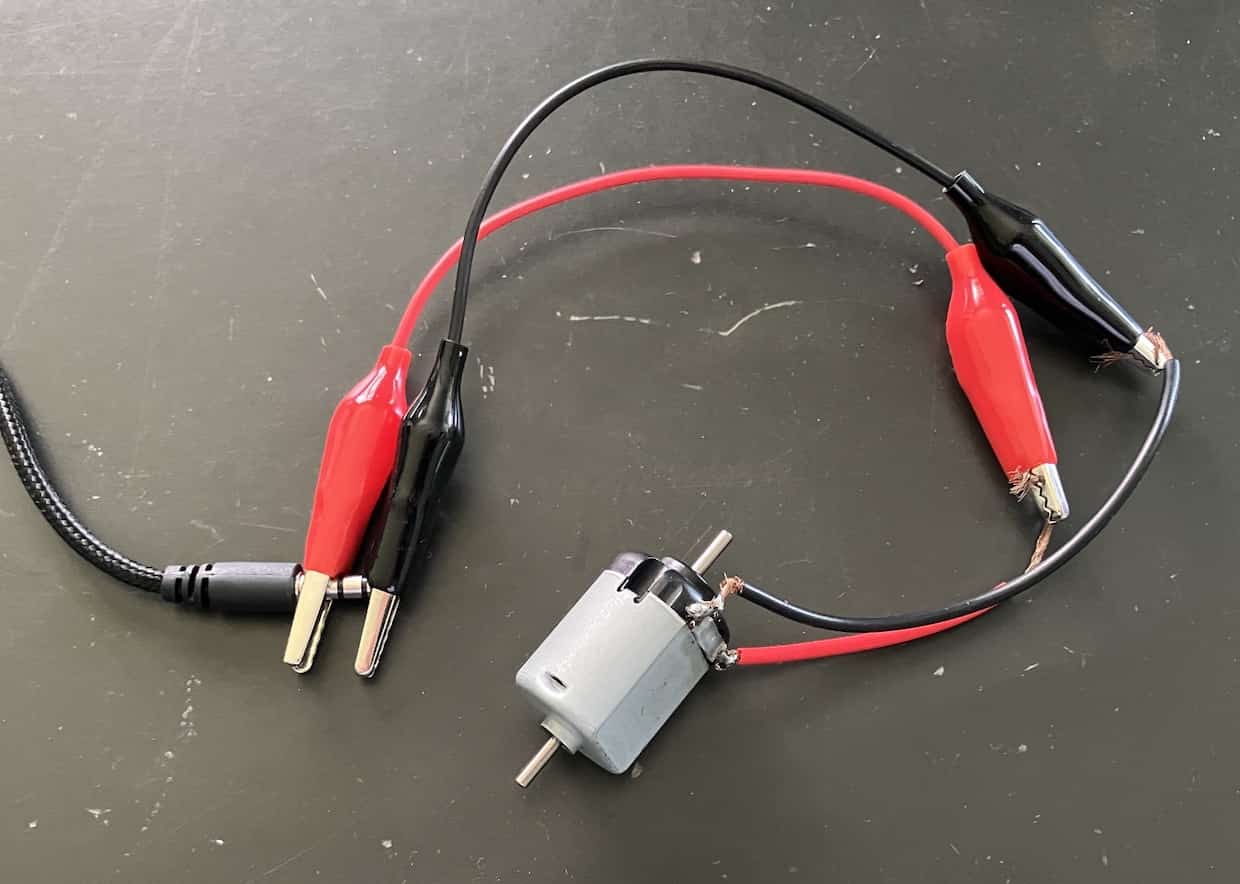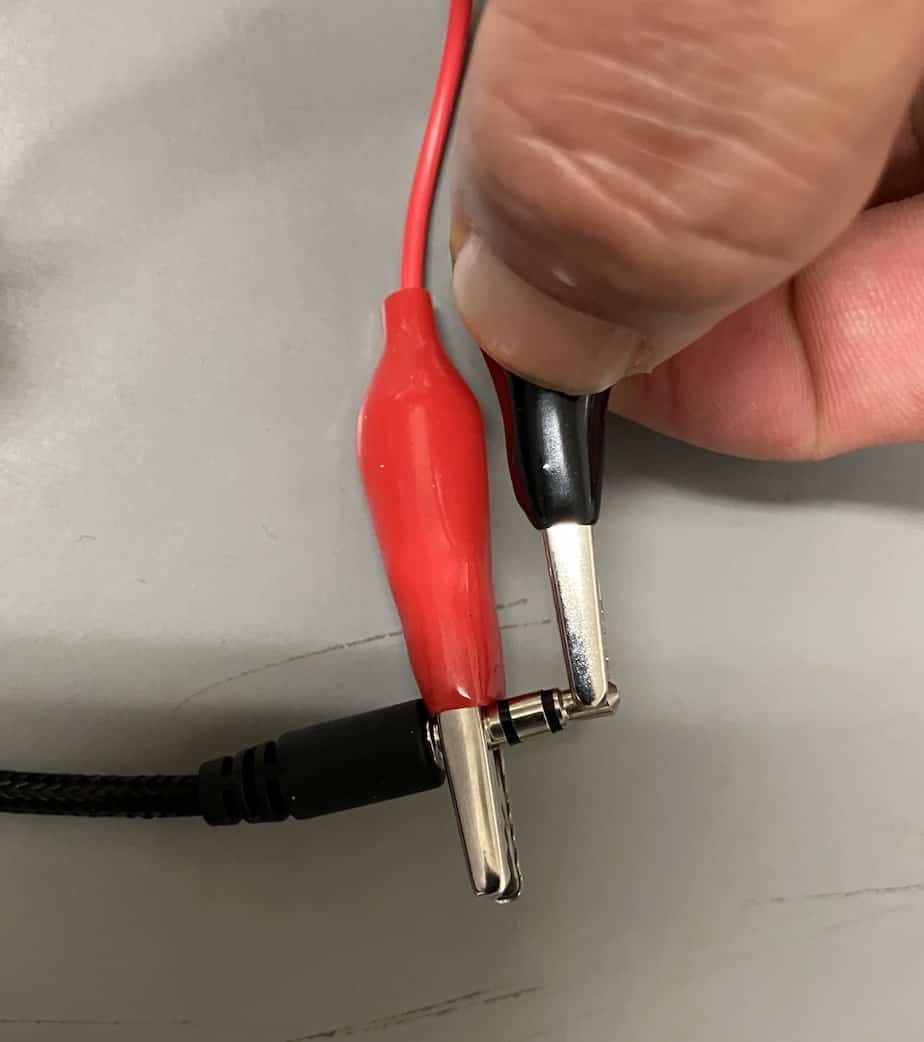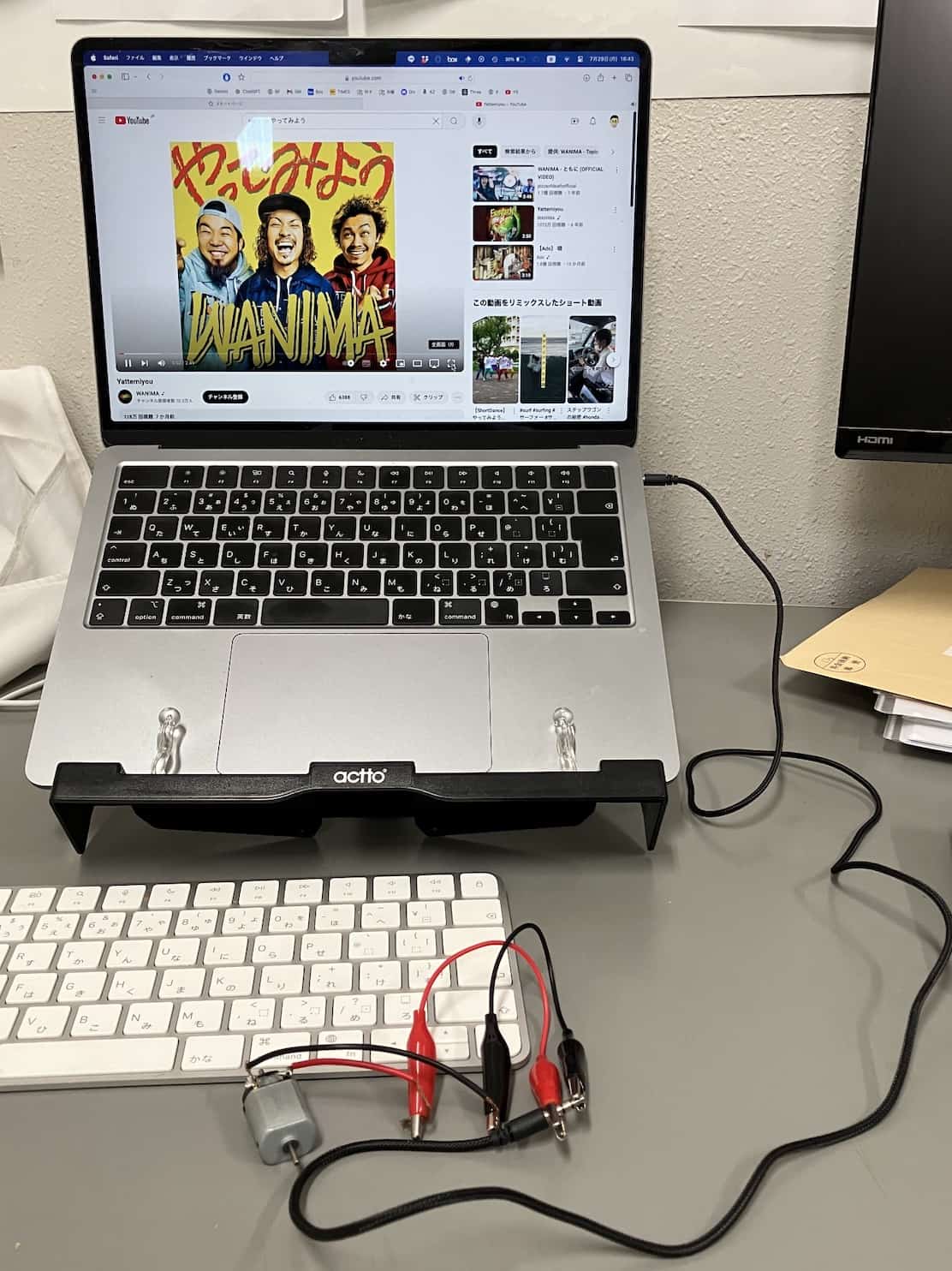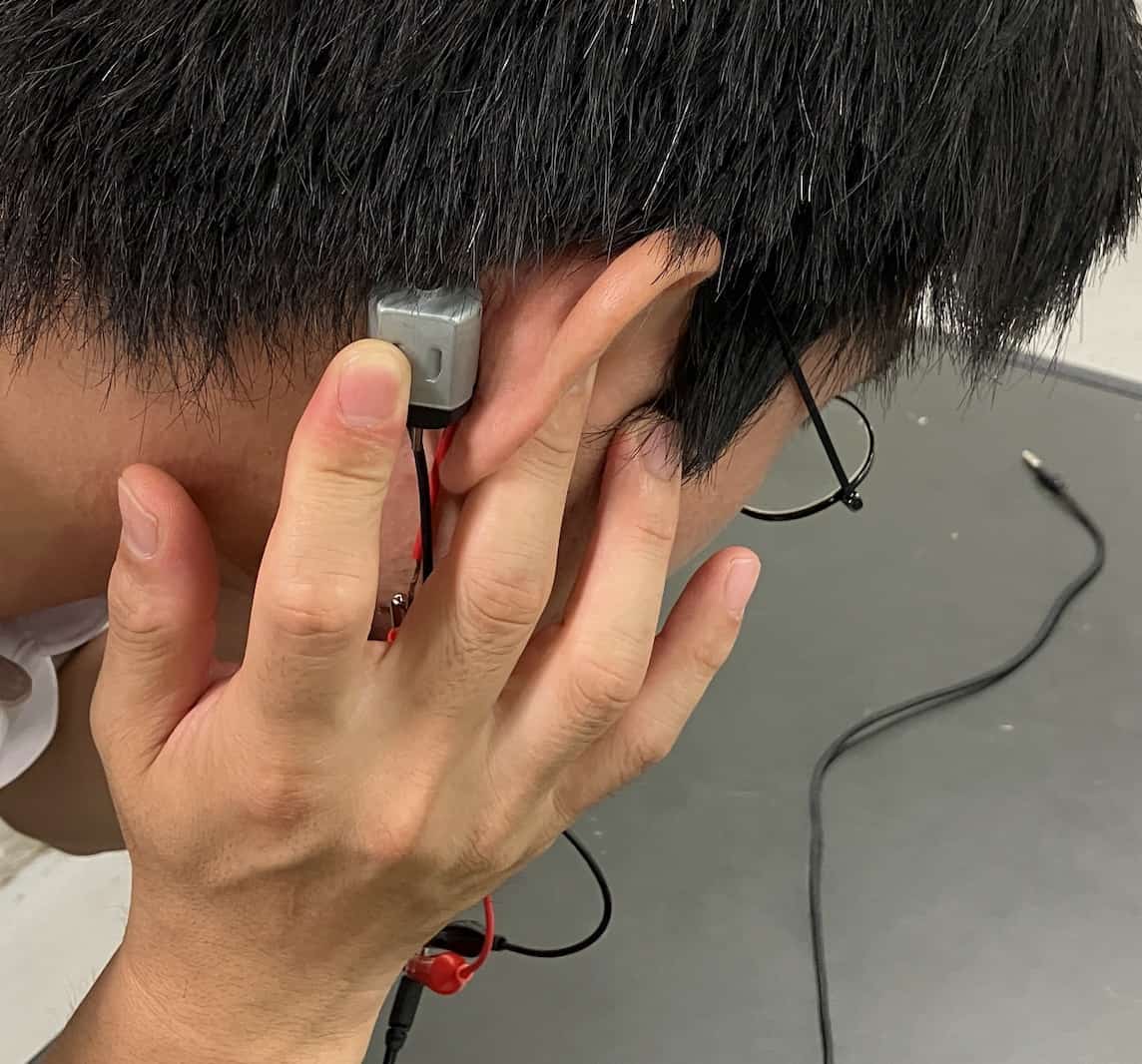Motors playing music!? Your motor just became a bone conduction earphone!
This is Ken Kuwako, your Science Trainer. Every day is an experiment.
We all use earphones every day, whether they’re in-ear or over-ear models. But did you know there’s a way to listen to sounds without using your ears at all?
Today, we’ll use some common items to perform a simple experiment that demonstrates the fascinating way sound travels. The key to this is a hidden “ear” in our heads: bone conduction.
Experience Bone Conduction with a Motor and an Earphone Jack
When you connect a motor to an earphone jack, the motor vibrates slightly. Our science club did an experiment where we used bone conduction to listen to that vibration. The experiment is simple and can be done like this.
How to Perform the Experiment
Prepare the materials
First, get a male-to-male earphone jack cable and a small motor.

Connect the motor to the cable
Plug one end of the cable into a music device and connect the other end to the motor’s terminals. Make sure to connect to the tip and the back part of the earphone jack.

Play some music
Play a song with a clear melody on your smartphone or music player. We used WANIMA’s “Yattemiyou.”

Place the motor against a bone
Plug your ears with your fingers and press the motor firmly against the bone behind your ear (the temporal bone).

And what do you hear? The motor’s tiny vibrations should travel through your bone, and you’ll begin to hear the music inside your head.
The Science of Bone Conduction
Normally, we hear sounds when air vibrations (sound waves) make our eardrums vibrate. Those vibrations then travel through a spiral-shaped organ called the cochlea to our brain.
With bone conduction, however, the sound vibrations travel directly through your skull to the cochlea, bypassing your eardrum completely. This is what allows you to hear sounds even when your ears are covered.
Have you ever wondered why your voice sounds strange when you plug your ears and speak? That’s also due to bone conduction. You might have also seen bone conduction earphones becoming more popular recently.
One of the most famous examples of bone conduction is the great composer Beethoven. Suffering from deafness, he’s said to have used a special method to hear music: he would hold a conducting baton in his mouth and press the other end against his piano to feel its vibrations. This is a wonderful historical example of bone conduction in action.
You can find more detailed instructions on how to build this on this website.
Connecting scientific knowledge to everyday objects makes the world a much more interesting place. This experiment is a great way to experience the physics of sound with your own senses. So, why not try listening to music with your “other ear”?
Contact & Inquiries
Want to get closer to the wonders and fun of science? We’ve put together a collection of enjoyable science experiments you can do at home, along with easy-to-understand tips. Feel free to browse around!
About the administrator, Ken Kuwako: Click here
For all requests (writing, lectures, science classes, TV supervision, appearances, etc.): Click here
– Article updates are posted on X!
![]() Our Science Snippets Channel features experiment videos!
Our Science Snippets Channel features experiment videos!


